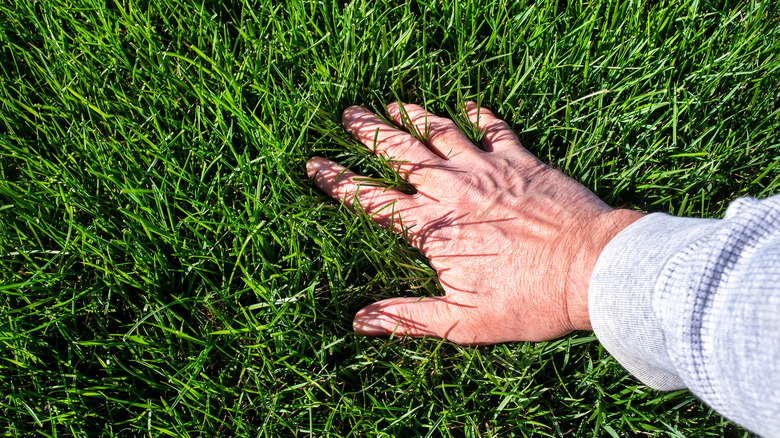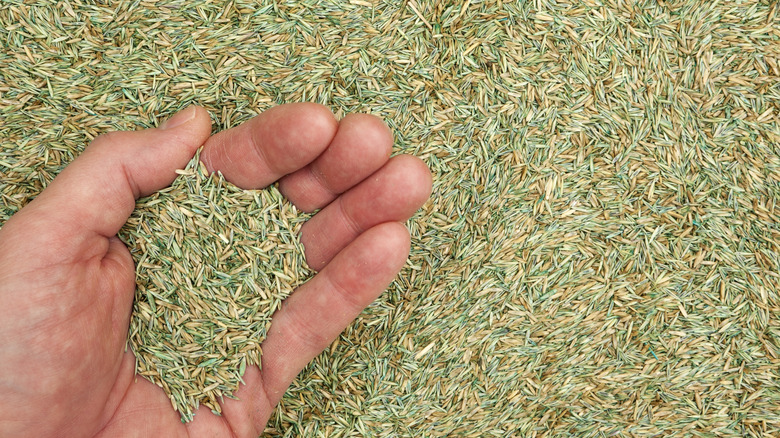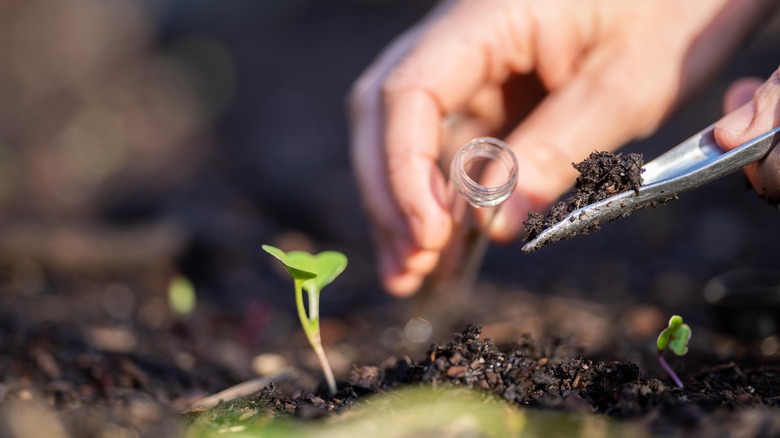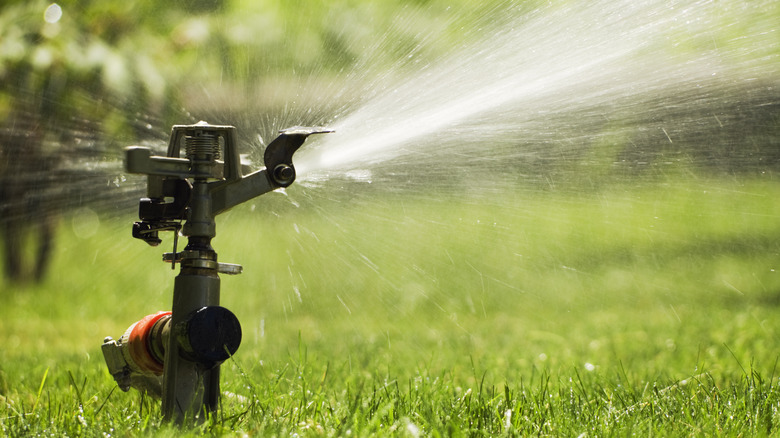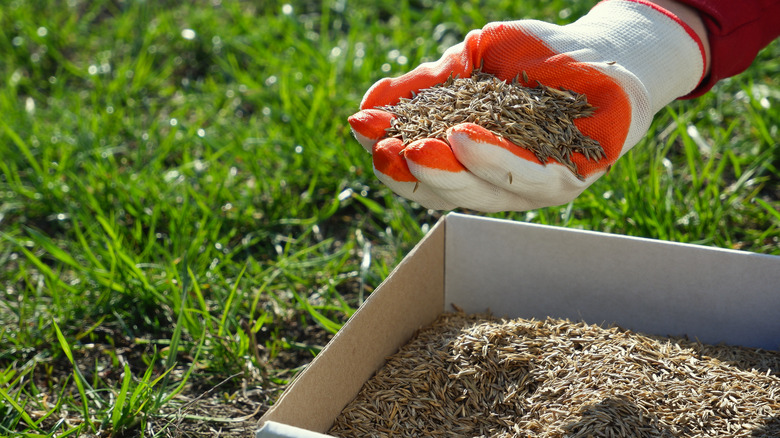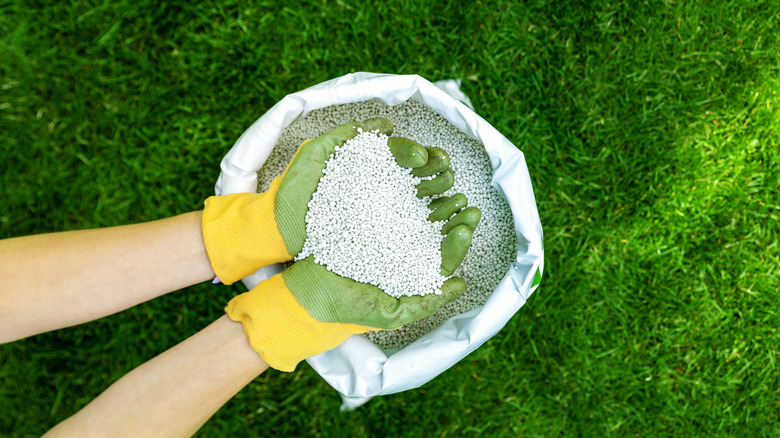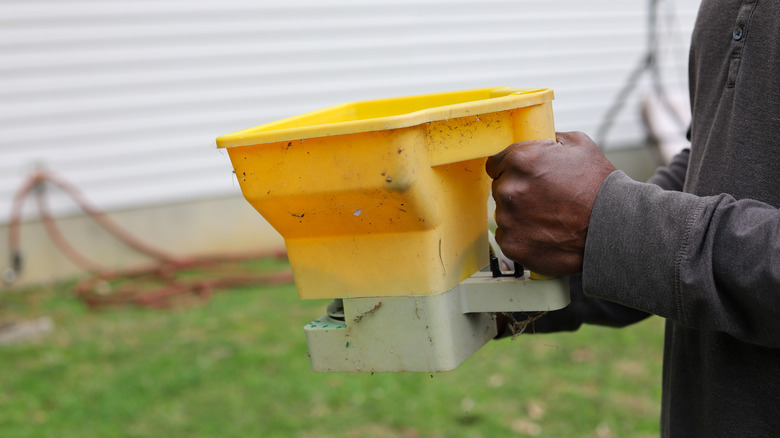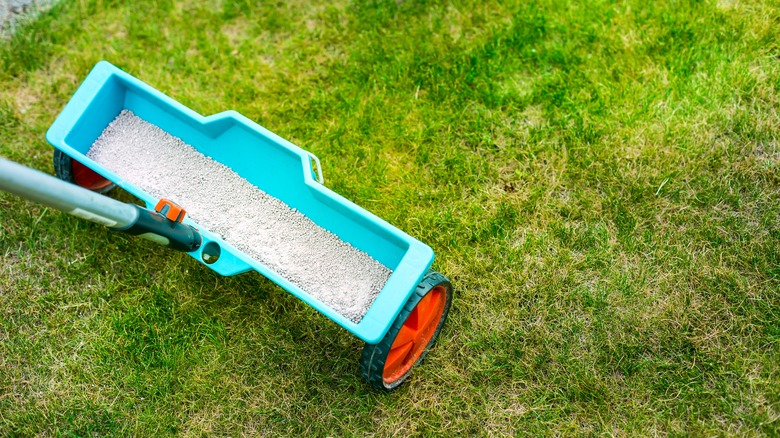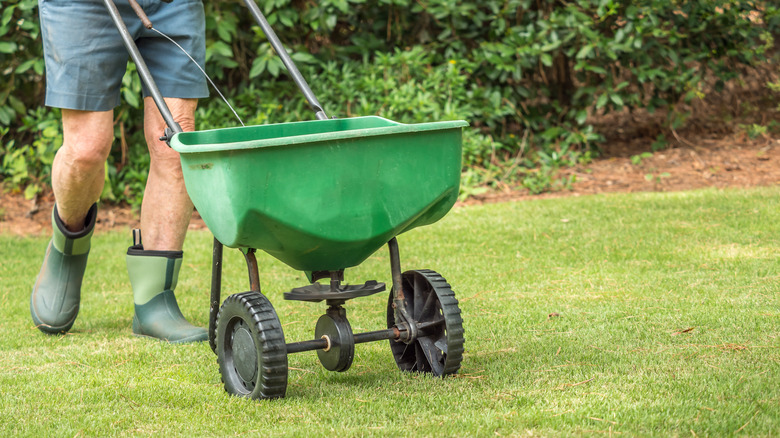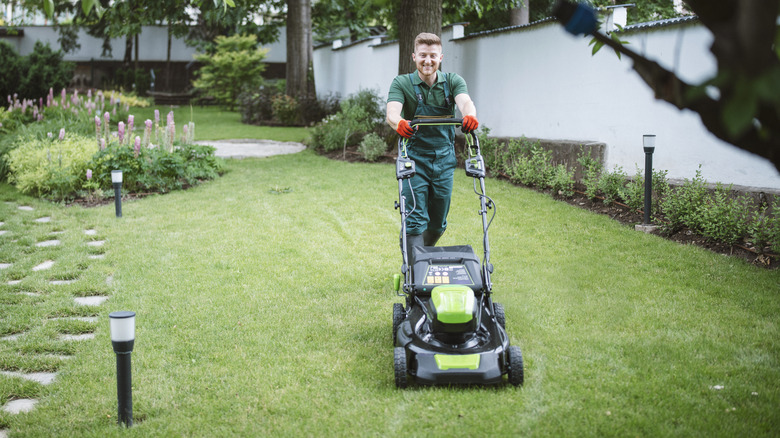How To Create The Best Lawn Seed And Fertilizer Schedule For A Healthy Yard
We may receive a commission on purchases made from links.
Even if you have a fairly healthy lawn, you might be looking for ways to improve it and keep it looking as green as possible. Knowing when to reseed your lawn and how to use the right techniques to overseed your lawn can be a big help in strengthening your yard. Figuring out the minimum number of times to fertilize your lawn, as well as the best fertilizing schedule, is important, too.
Even with all that information in hand, you still need to determine the proper schedule for seed and fertilizer application. Without the right timing, you could end up negating all your work and wasting time and money. If you overseed your lawn too early, low temperatures may leave the new seedlings unable to survive. Applying fertilizer to your grass — or any plants — outside the recommended window could cause a growth spurt at a time when the plant should be dormant, potentially resulting in weakness down the road.
We'll help you set up a calendar for applying lawn seed and fertilizer to your healthy lawn, helping you keep it that way.
Winter: Select the type of seed you want to use
Because overseeding can provide benefits like thickening plants, improving their color, and enhancing their drought resistance, you may be tempted to jump in and overseed as much as possible with whatever grass seed you can find. However, this is not the best solution when creating a calendar.
During the wintertime, think about what types of grass you want to use. Since different kinds of grass seeds thrive at different times of the year, your overseeding schedule must reflect the species you want to plant. Typically, cool-season grasses used in lawns include Kentucky bluegrass, fescue varieties, and ryegrass. They grow best in the northern two-thirds of the continental United States, especially in the northern half.
Warm-season grasses include Bermuda, centipede, zoysia, and St. Augustine. These types of plants tend to perform better in the southern half of the continental United States, especially in the southeast and Texas. You don't have to overseed with the exact same type of grass you currently have, but selecting cool- or warm-season varieties to match your location is the best path to success.
Late winter: Test your soil to understand what nutrients you need to add
Before the growing season actually starts, you need to test the soil to determine what nutrients will promote healthy grass seed growth in your soil. You have the option of purchasing a DIY soil testing kit (available on Amazon for about $30) or checking with your local state or county extension office to see if it offers free kits.
Based on the results, you can determine what additives to use as part of your fertilizer program or as an add-on to whatever fertilizer product you select. If the testing shows that you have acidic soil, which is usually less than 5.5 on the pH scale, you could add ground limestone to the soil. Soil with a rating of more than 7.0 is too alkaline, and sulfur is the primary option to fix high soil pH.
You also can change the pH through the application of certain types of fertilizer products that may have some sulfur or limestone included. However, you need to use any of these additives carefully and correctly or their application could damage the lawn.
Late winter: Plan your watering schedule
To keep your lawn healthy and give the new sprouts that spring up after overseeding the best chance to thrive, you need to be ready to add water. This means creating a plan to deliver water any time you don't receive enough rain.
If you have the time and physical strength, you can water the lawn whenever needed by moving hoses and sprinklers by hand. Hand watering lets you easily see whether the grass is receiving the proper amount of water, and it's far less expensive than installing an automatic system. However, it's also very time-consuming.
The alternative is installing an automatic sprinkler system, which lets you set a watering schedule and forget about it. Forbes estimates the cost of professional irrigation installation at anywhere from $2,200 to $5,000. Whichever route you decide to take, be sure that your plan is in place before the growing season begins so you aren't scrambling to figure out what to do when you have a few days without adequate rain.
Early spring: Overseed and fertilize cool-season grasses
The most popular cool-season grasses do best when you perform overseeding and fertilizing in the early- to mid-spring. Wait until soil temperatures are consistently at 50 degrees Fahrenheit or higher before you start. This is the best time for overseeding cool-season grasses because the soil is warm enough to allow germination, but it doesn't get hot and dry to the point that conditions could harm new seedlings.
By fertilizing the cool-season grasses in early spring, you provide the existing grass plants with the food they're craving as they come out of winter dormancy.
Late spring to early summer: Overseed and fertilize warm-season grasses
Warm-season grasses are best overseeded and fertilized from late spring to early summer. They tend to have a higher tolerance for varying soil and environmental conditions than cool-season grasses, so the overseeding and fertilizer schedule window isn't quite as narrow.
By fertilizing the warm-season grass at the right time, you can be certain it receives the nutrients it needs to begin growing vigorously as the weather turns warmer.
Mid-summer: Overseed warm-season grasses
Mid-summer is a good time to overseed a lawn that contains warm-season grasses, whether you plan to overseed a second time in the fall or not. These plants germinate in warm weather when the soil temperatures are higher, so the summertime heat won't inhibit growth. In fact, they tend to actively grow when temperatures are routinely higher than 70 degrees Fahrenheit. It is important to keep the grass and soil wet after the sprouts appear, which can be challenging in the heat of summer. Be sure to water every couple of days during this time (unless there is rainfall).
Late summer to fall: Fertilize cool- or warm-season grasses again
All grass types can benefit from receiving more fertilizer during the late summer or early fall period. When you feed the lawn at this time, it receives the nutrients it needs to stay strong enough to survive the winter. Additionally, feeding at this time of the year provides benefits the following spring, as the grass plants continue to rely on this fertilizer application when they start growing again after winter.
Early fall: Overseed cool-season grasses
Overseeding your cool-season grasses for a first or second time in the early fall can give them time to thrive before they go dormant in wintertime. The new grass takes two to four weeks to mature after overseeding, so you need to do it well before freezing temperatures arrive. Autumn also tends to deliver more rain than summer, which is beneficial for helping your grass germinate and grow strong before the dormant period. The soil remains warm at this time of the year, but the nights are cooler, which is helpful for cool-season grass seeds.
Any time of the year: If you're unsure, ask for help
If you're struggling with determining the best calendar for overseeding and fertilizing your already-established lawn, check your local state or county extension office. In many cases, it provides advice tailored to the type of weather and climate you experience at your home. Visit the websites of these offices to find helpful documents. Sometimes, they even provide personalized advice if you set up an appointment.
You also can reach out to a local lawn care company with overseeding and fertilizing services as separate packages or as part of an overall lawn care and landscaping package, which may include mowing and pruning. Such service providers may charge you a monthly fee or a fee each time they visit. If you don't have time to follow a lawn care calendar on your own, hiring someone else to do it will give you the best chance at maintaining a healthy lawn that's the envy of all the neighbors.
